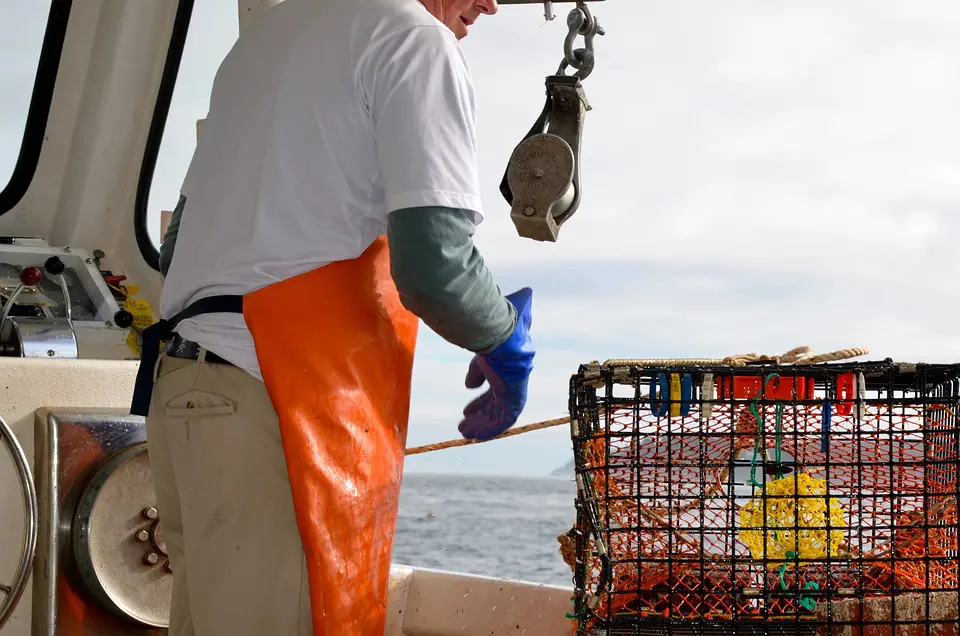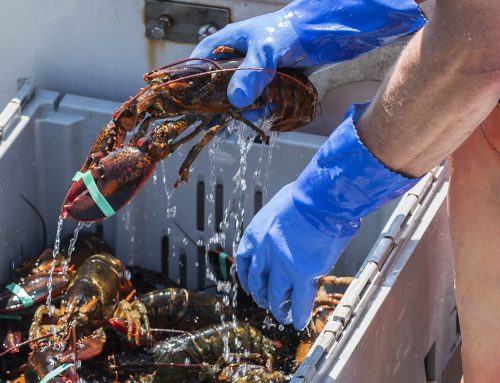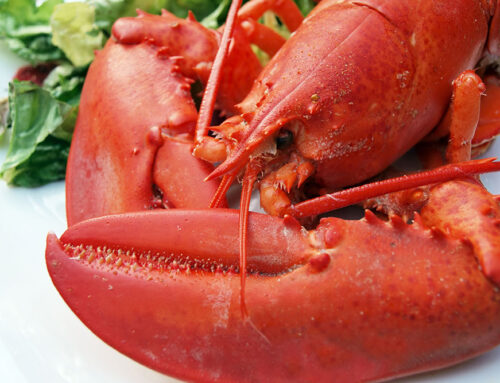It’s a common sight in the fishing communities of Maine each winter to see a stack of wire traps, usually yellow or green, neatly clustered together in someone’s side yard for the off season. But, have you ever looked at one up close?
In Maine, the device for catching a lobster is more commonly called a trap (and regionally sometimes referred to as a “pot.”) In the mid-1600s, anyone could catch a lobster inshore with a hoop net and a dory. Later, wooden rounded traps replaced that method, becoming the forerunner of the modern plastic coated metal frame design.
Weighted down by about four bricks, the trap sits on the ocean floor and is secured at the surface, strung up by a buoy. The buoy’s unique painted color scheme distinguishes that trap (or gang of traps) from everyone else’s.
The genius of a lobster trap is that it is built to be an enticing little temporary “home” for lobsters, which tend to crawl along the ocean floor anywhere from 20 to 500 feet in depth. Thus, it makes sense that the various areas of the trap are labeled after the rooms in a house. First, they enter through the seven-inch funnel of netting called the ‘side head” or “entry head,” which gets them into the trap’s first compartment—the kitchen. Like a freeloader at an Open House, a lobster just looking to score some free wine and appetizers then nibbles on the bait bag (usually stuffed with salted fish such as herring) and attempts to exit the kitchen through a second cone of netting into the middle of the trap known as the mid parlor. Each compartment of the trap gets smaller and harder to get through like a fun house, when they crawl through the cone-like netting to the third chamber called the parlor.
There’s an iconic lyric in The Eagles song “Hotel California:” “You can check out any time you like, but you can never leave.” That should be the lobsters’ theme song. It’s easy for the larger lobster to crawl into the trap, but the funnel shape of each head and its tunneled netting into smaller compartments makes it much more difficult for them to crawl out (although quite a few manage to escape).
However, the forefathers of the lobster industry were conservationists before that term had ever caught on in the 20th century. To borrow another lyric: “Just slip out the back, Jack” from Paul Simon’s “Fifty Ways To Leave Your Lover,” the modern lobster trap has to be equipped with at least one escape vent (which looks like a mail slot) measuring 2 x 6 inches for small marine life and lobsters smaller than 3 3/8-inch carapace length that can’t legally be caught anyway. So, if a small lobster crawls all the way through to the parlor, the escape vents allow them to swim away and live to grow bigger and procreate.
In the last 25 years, the design of the trap has improved with small tweaks. Ghost traps (traps cut off at the surface and laying unattended on the ocean floor) are a big problem every year, so lobsterman also designed another conservation device of equipping each escape hatch with biodegradable steel rings that would disintegrate in six to 12 months. So, if any large lobsters are still caught in a ghost trap, they can eat all the other stuff that comes into the trap until they eventually escape.
For more than 200 years, the design of this trap was deliberately envisioned by lobstermen who didn’t want to over-exploit this natural resource, so they could leave a healthy industry for future generations. No other fishing industry has been as self-regulated and as visionary as Maine lobstering, and today, when so many other resources are depleted, the Maine lobster industry has become a model of sustainable seafood, continuing to thrive even though years of heavy fishing.










